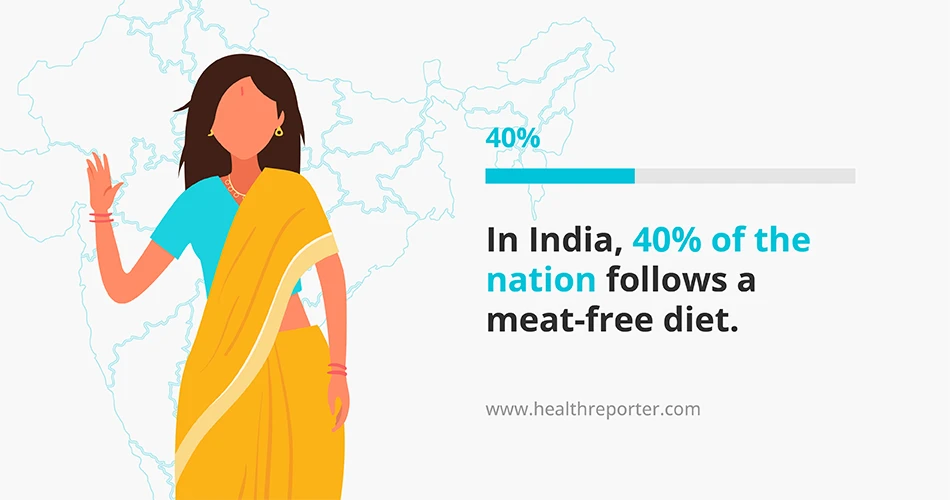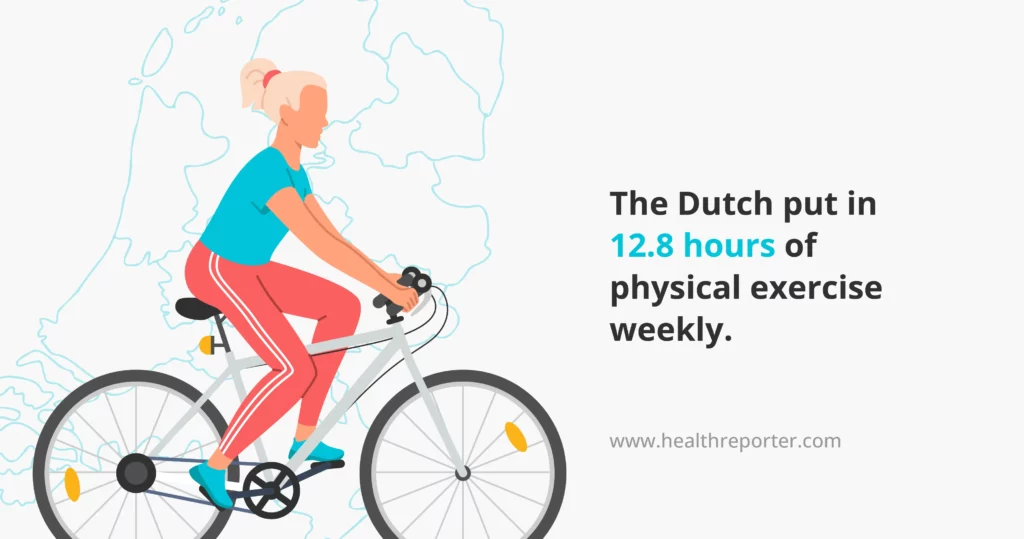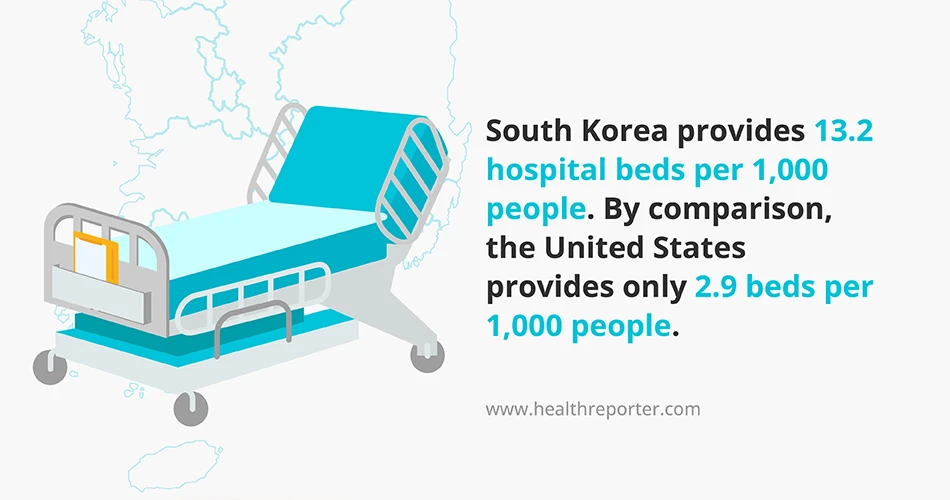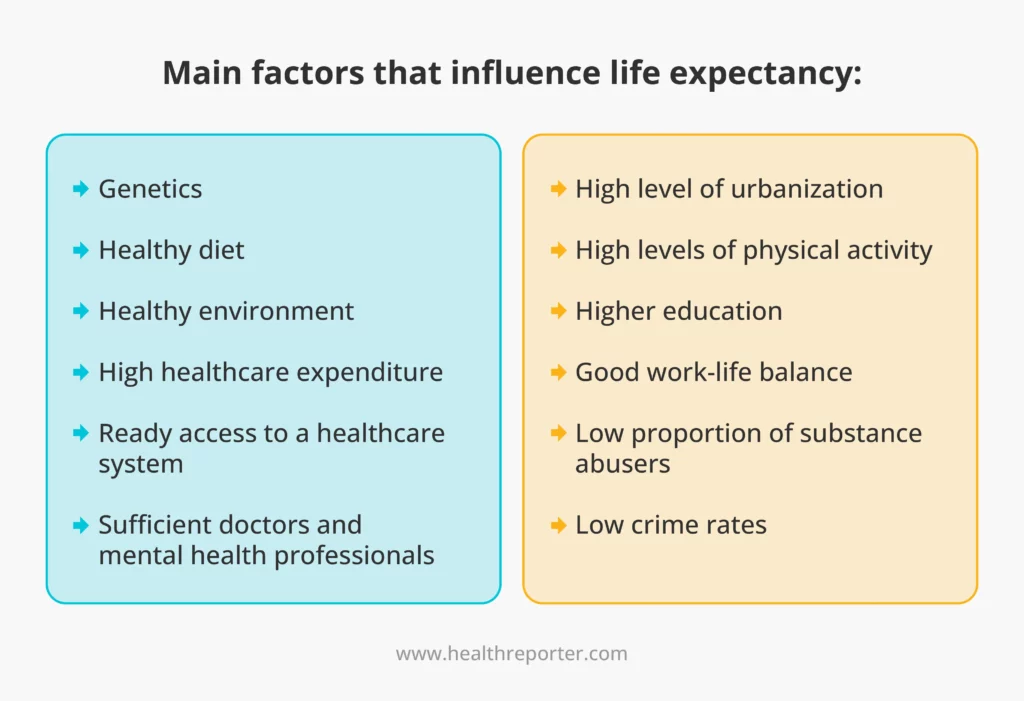Healthiest Countries in the World in 2023: 10+ Rankings Revealed
From life expectancy and physical activity levels to tobacco use and mental health, some countries check more health boxes than others. Find out which country is the healthiest in each major category.

No formula can definitively measure a nation’s health. Most sources aggregate metrics like life expectancy, healthcare system, or environmental factors to assign each country a rating or index score.
The methods used to determine the world’s healthiest countries vary from source to source. This can lead to significantly different results.
With that in mind, high-income countries tend to be the world’s healthiest countries. But individual variations in metrics like tobacco use, alcohol consumption, obesity rates, or physical activity can generate substantial differences.
Discover the healthiest countries in the world based on life expectancy, healthcare system, environmental factors, mental health, and more.
10 Healthiest Countries in the World
Many factors contribute to human health, from life expectancy and low obesity rates to a clean environment and the availability of mental health services.
One way to determine the healthiest country is to see what nation outperforms the others in any of these important categories.
So, what are the healthiest countries in the world according to the major factors determining health?
#1 Switzerland has the highest life expectancy
Switzerland’s high spending on healthcare, clean environment, health policies, and wealth make it a haven for people who hope to live a long, comfortable, and prosperous life.1
The country provides a high level of financial stability with some of the largest salaries in the world. At the same time, it provides a good work-life balance having one of the lowest average hours worked metric.2
Switzerland also has one of the lowest mortality rates in Europe.3 The country is likewise known for its healthy diet, which includes an abundance of fresh fruit and wholesome meals like Bircher muesli, a Swiss invention.
Add to that the beautiful and clean environment that most Swiss people live in, and it’s not hard to see why Switzerland has a very high life expectancy.
#2 India has the lowest obesity rates

India is the most vegetarian country in the world, with around 40% of the nation reporting following a meat-free diet.4
Eating a lot of meat isn’t enough to cause obesity. But India’s meat restrictions, coupled with the country’s large agricultural yield, make vegetables a daily staple in most kitchens.
In a country still affected by poverty, high-fat, high-calorie foods are expensive for much of the population.
Although the percentage of overweight Indians has been increasing in recent years, the country remains considerably “lighter” than many Western countries.5
This makes India one of the healthiest countries in the world despite persistent problems with malnutrition and the availability of medical services among rural populations.
#3 Indonesia has the lowest alcohol consumption
In 2015, the Indonesian government banned the sale of alcohol in small shops.6 A Muslim-majority country, Indonesia has seen alcohol bans that would make drinkers in other countries uneasy. But not most Indonesians.
Drinking is frowned upon in Indonesia. This acts as a social barrier that deters consumption and makes the country claim the top spot as far as alcohol consumption goes.
While alcohol remains available in Indonesian tourist hotspots like Bali, the high alcohol tax does act as a deterrent that helps reduce alcohol consumption.
This indirectly contributes to the country’s overall health, considering that alcohol promotes weight gain and has other negative effects on health.
#4 Hungary has the highest vaccination rates
In 2018, 99.9% of children in Hungary were vaccinated against polio.7 The country’s policy of mandatory vaccination gives it one of the highest vaccination rates of all European countries.
Despite the measles epidemic, the country experienced in 1988–1989, Hungary has managed to implement a successful vaccination program against two of the most problematic vaccine-preventable diseases in the world – polio and measles.8
While Hungary’s healthcare system requires improvement, the country’s vaccination efforts have so far strengthened national health.
#5 Iceland has the lowest tobacco use
Iceland was the first country to ban tobacco advertising in the mass media.9 It then went on to ban all promotion of tobacco products. The mass coverage of tobacco products is also banned in Iceland. These products are also not visible at the point of sale.
Moreover, Iceland shares the highest cigarette prices in Europe with Norway.10 In other words, Iceland isn’t the country to be in if you like to smoke.
Iceland is also a high-income country. Smoking is less common among high earners.11
#6 The Netherlands is the most physically active nation
The Dutch put in 12.8 hours of physical exercise weekly, according to an IPSOS survey.12 This is more than twice the global country average.
Fitness, running, swimming, and cycling are the most common activities, each with notable health benefits. Cycling, for example, can burn stubborn belly fat. Soccer is the most popular sport, followed by tennis and basketball.

Interestingly, Dutch men total 4.7 more hours of sports than Dutch women. This is one of the largest gender gaps in physical activity among all countries.
The Dutch love for cycling likely contributes to making this the most physically active nation. In 2021, there were an estimated 23.4 million bicycles in the Netherlands – that’s a few million more than there are Dutch people.13
#7 South Korea has the best healthcare system
South Korea has universal healthcare, which it achieved in only 12 years.14 This system is funded through government subsidies, tobacco surcharges, and outside contributions.
Although not all treatments are covered by the country’s universal healthcare, treatment in South Korea is generally affordable.
The country has some of the highest survival rates for certain forms of cancer and hemorrhagic and ischemic stroke.15
South Korean hospitals are well equipped, having some of the highest MRI and CT scanner units per capita among OECD countries.

The country also provides 13.2 beds per 1,000 people.16 By comparison, the United States provides only 2.9 beds per 1,000 people.
#8 Denmark has the cleanest environment
Around two-thirds of Danish electricity comes from clean sources.17
The waste-to-energy conversion plant Amager Bakke, which turns waste collected from up to 700,000 inhabitants of Copenhagen into energy for the city, has become a symbol of the Danish way to sustainability.
Denmark has also taken firm steps to reduce carbon emissions and adopt renewable energy. The country’s Climate Act aims to reduce greenhouse gas emissions by 70% by 2030 compared to 1990 levels.18
And although the country has access to oil and gas resources in the North Sea, it has decided to end these by 2050.
For all these reasons, Denmark more than deserves a Green medal.
#9 Finland provides the best mental health
In Finland, around 1 in 5 people suffer from mental illness, which is higher than the average in Europe.19 At the same time, the country has a high suicide rate.
According to the same source cited above, mental illness has a high economic cost, which in Finland was 5.3% of GDP.
Despite these worrying statistics, Finland ranked as the happiest country in the world in the latest edition of the World Happiness Report.20
Finland enjoys low-income inequality, low levels of corruption, and high social support. The Finnish way of life emphasizes the simple pleasures of life, enjoyed with friends and family in a clean environment.
Finland also has a flexible working policy and free education that contribute to the country’s overall happiness.
While the country’s reputation as the happiest in the world can itself generate mental health issues, especially among the young – talking about sadness in the world’s happiest country may not always be easy – the relaxed and free way of the Finns makes them, statistically at least, the happiest Europeans.
#10 Spain has the highest health index score
Spain ranks first in the Bloomberg Global Health Index, a metric that brings together multiple factors like life expectancy, nutrition, health risks, and healthcare.21
Spain has a high life expectancy and one of the most robust healthcare systems in Europe. The Mediterranean diet popular in Spain has healthy fats and plenty of vegetables. The Mediterranean diet is also low in red meat and unhealthy fats.
At the same time, Spain is an active country. Pedestrian-only streets in many cities encourage people to walk everywhere, despite good public transportation systems.
Although Spanish people drink and smoke like most Europeans, their active lifestyles, healthy diets, and solid healthcare system put them at the top of Bloomberg’s rankings of the world’s healthiest countries.
Top 10 Healthiest Countries
From life expectancy to mental health ratings, here’s a breakdown of the health categories that determine the world’s healthiest countries.
#1 By life expectancy
The life expectancy ranking is based on life expectancy at birth, or how long a newborn can live on average, given current death rates.
Research indicates that in the case of people who live beyond the normal life expectancy, environmental factors account for 75% while genetics for 25%.22

| Ranking | Country | Life expectancy |
| 1 | Switzerland | 81.9 years |
| 2 | Iceland | 81.8 years |
| 3 | Norway | 81.7 years |
| 4 | Japan | 81.6 years |
| 5 | Sweden | 81.4 years |
| 6 | Australia | 81.2 years |
| 7 | Ireland | 80.8 years |
| 8 | Luxembourg | 80.7 years |
| 9 | Italy | 80.6 years |
| 10 | Israel | 80.5 years |
Data source: The Organisation for Economic Co-operation and Development (OECD), Life expectancy at birth
Life expectancy in rich countries tends to be significantly higher than in underdeveloped countries. The countries that constantly make it to the top of life expectancy charts are some of the world’s richest in terms of income per capita.
In a wealthy country, citizens have access to better healthcare. At the same time, they can choose to eat healthy, have more leisure time, and receive better mental health support. Well-being comes more easily to them.
#2 By prevalence of obesity
The prevalence of obesity ranking below is based on the percentage of the population in a country with a body mass index (BMI) of 30 or higher. It includes both sexes.
According to the World Health Organization, overweight and obesity have grown to endemic proportions, causing 4 million deaths every year.23
Obesity is a major risk factor for mortality from all causes.24 It increases the risk of high blood pressure, type 2 diabetes, heart disease, stroke, osteoarthritis, gallbladder disease, anxiety, and clinical depression. It’s also a risk factor for low quality of life.
A diet high in fats and sugar, together with a sedentary lifestyle, can easily lead to obesity. However, genetics and medical reasons may also contribute to obesity.
| Ranking | Country | Percentage of the population who is obese |
| 1 | India | 3.9% |
| 2 | Japan | 4.3% |
| 3 | South Korea | 4.7% |
| 4 | China | 6.2% |
| 5 | Indonesia | 6.9% |
| 6 | Switzerland | 19.5% |
| 7 | Denmark | 19.7% |
| 8 | Italy | 19.9% |
| 9 | Austria | 20.1% |
| 10 | Slovenia | 20.2% |
Data source: World Health Organization (WHO), The Global Health Observatory, Prevalence of obesity among adults
Studies suggest that obesity is more likely to occur in people with a high income who live in low to middle-income countries. By contrast, it’s less likely to occur in those with a high income who live in high-income countries.25
Nations with low obesity rates are among the world’s healthiest countries. These include Asian countries known for eating healthy fats and European countries like Italy that have embraced the Mediterranean diet rich in healthy fats and vegetables.
Nevertheless, wealthy countries like the United States, the UK, and Australia continue to experience high obesity rates.
#3 By alcohol consumption
Alcohol consumption per country is based on the number of liters of pure alcohol sold per person (aged 15 or older).
Alcohol consumption is associated with a higher risk of disease (liver cirrhosis, stroke, cancer, heart disease).26 It also increases the risk of death and disability through accidents, injuries, violence, and suicide.
| Ranking | Country | Alcohol consumption in liters |
| 1 | Indonesia | 0.1 liters |
| 2 | Turkey | 1.2 liters |
| 3 | Costa Rica | 3.1 liters |
| 4 | India | 3.1 liters |
| 5 | Israel | 3.1 liters |
| 6 | Mexico | 3.9 liters |
| 7 | Colombia | 4.1 liters |
| 8 | China | 4.5 liters |
| 9 | Peru | 5.7 liters |
| 10 | Brazil | 6.1 liters |
Data source: The Organisation for Economic Co-operation and Development (OECD), Alcohol consumption
Global alcohol consumption causes 2.8 million premature deaths every year.27 Alcohol consumption in European countries tends to be higher than in other parts of the world.
More than two-thirds of adult Europeans drink alcohol.28 Markedly fewer people drink alcohol in countries with a high Muslim population.
#4 By vaccination rates
This vaccination metric takes into account children who have received the rubella vaccine and the first dose of the measles vaccine.
Measles and rubella can cause brain damage, blindness, and deafness. Measles can also cause pneumonia. Rubella can also cause heart problems.
| Ranking | Country | Vaccination score (rubella + polio vaccines) |
| 1 | Hungary | 99 |
| 2 | China | 98.5 |
| 3 | Portugal | 97.5 |
| 4 | Russia | 97.5 |
| 5 | Latvia | 97.5 |
| 6 | South Korea | 97 |
| 7 | Costa Rica | 97 |
| 8 | Slovakia | 97 |
| 9 | Norway | 96 |
| 10 | Sweden | 96 |
Data source: World Health Organization Immunization Data.
The world’s healthiest countries have managed to dramatically reduce the number of rubella and measles cases through effective vaccination programs.
Measles vaccination alone has prevented 56 million deaths from 2000 to 2021 and eased a considerable burden on healthcare systems.29
#5 By tobacco use
The tobacco use ranking by country refers to the percentage of the population aged 15+ years (men and women) who report that they smoke daily.
Smoking is a major risk factor for heart disease and cancer, both leading causes of premature death. It also contributes to respiratory diseases.30 It can cut short an otherwise long and prosperous life.
| Ranking | Country | Percentage of the population that smokes |
| 1 | Iceland | 7.2 |
| 2 | Mexico | 7.4 |
| 3 | Costa Rica | 7.8 |
| 4 | Norway | 8 |
| 5 | India | 8.1 |
| 6 | Peru | 8.2 |
| 7 | Brazil | 9.1 |
| 8 | Canada | 9.4 |
| 9 | New Zealand | 9.4 |
| 10 | United States | 9.4 |
Data source: OECD Daily Smokers
Tobacco use varies widely by country and occurs especially among poor and vulnerable groups.31 One in five adults smokes tobacco, predominantly in South-East Asia, the Pacific Islands, and Europe.
Low tobacco use can help ease the pressure on a health system and promote well-being.
Iceland and Norway are the only European countries in the top 10 list above with a low rate of tobacco use.
#6 By level of physical activity
Physical activity reduces the risk of disease, promotes weight loss, lowers high blood pressure, improves mental health, and has other notable health benefits.32 People with healthy lifestyles embrace at least some amount of physical activity.
| Ranking | Country | Hours of physical exercise per week |
| 1 | Netherlands | 12.8 |
| 2 | Germany | 11.1 |
| 3 | Romania | 11 |
| 4 | Russia | 9.2 |
| 5 | Hungary | 8.8 |
| 6 | India | 7.9 |
| 7 | Belgium | 6.9 |
| 8 | Canada | 6.6 |
| 9 | China | 6.4 |
| 10 | South Africa | 6.4 |
Data source: IPSOS Global Survey
However, simply going to the gym three times a week doesn’t necessarily lead to a healthy lifestyle.
The world’s most physically active countries feature naturally active lifestyles, whether this is because of their geography, workforce requirements, or climatic conditions.
An example of this is Norway. Although Norway didn’t make it into the top 10, it’s known for its outdoor life. The active Norwegian lifestyle involves plenty of hiking (hiking burns more calories than walking) and swimming.
#7 By healthcare system
The healthcare system rating is based on CEOWorld Magazine’s statistical analysis of healthcare infrastructure, healthcare professionals, medicine availability, government readiness, and more.
The Health Care Index is an average of individual scores for all of these metrics. A strong healthcare system contributes to a longer life expectancy. Notably, all the top 10 countries below provide universal healthcare.
| Ranking | Country | Healthcare score |
| 1 | South Korea | 78.72 |
| 2 | Taiwan | 77.7 |
| 3 | Denmark | 74.11 |
| 4 | Austria | 71.32 |
| 5 | Japan | 70.73 |
| 6 | Australia | 67.99 |
| 7 | France | 65.38 |
| 8 | Spain | 64.66 |
| 9 | Belgium | 64.63 |
| 10 | United Kingdom | 61.73 |
Data source: CEOWorld Magazine‘s Health Care Index
Countries like France and the United Kingdom provide some of the largest and best-known public healthcare systems, so their inclusion on this list isn’t accidental.
Meanwhile, South Korea and Taiwan are examples of how smaller countries can build an excellent healthcare system in a shorter period.
#8 By cleanest environment
The cleanest environment ranking by country is based on the environmental performance score developed by Yale University.
This score takes into account 40 performance indicators spanning environmental health, climate change performance, and ecosystem vitality.
| Ranking | Country | Environmental performance score |
| 1 | Denmark | 77.90 |
| 2 | United Kingdom | 77.70 |
| 3 | Finland | 76.50 |
| 4 | Malta | 75.20 |
| 5 | Sweden | 72.70 |
| 6 | Luxembourg | 72.30 |
| 7 | Slovenia | 67.30 |
| 8 | Austria | 66.50 |
| 9 | Switzerland | 65.90 |
| 10 | Iceland | 62.80 |
Data source: Yale 2022 Environmental Performance Index (EPI)
A country’s environmental performance is associated with a country’s economic development.33 More than taking into account green policies and institutions, it measures the total ecological impact a nation has.
#9 By mental health ranking
The mental health rating by country is based on the life evaluations featured in the 2023 World Happiness Report. The annual report relies on data from the Gallup World Poll in which respondents are asked to evaluate their lives on a ladder from 0 to 10. It takes into account positive and negative emotions.
| Ranking | Country | Happiness score |
| 1 | Finland | 7.804 |
| 2 | Denmark | 7.586 |
| 3 | Iceland | 7.530 |
| 4 | Israel | 7.473 |
| 5 | Netherlands | 7.403 |
| 6 | Sweden | 7.395 |
| 7 | Norway | 7.315 |
| 8 | Switzerland | 7.240 |
| 9 | Luxembourg | 7.228 |
| 10 | New Zealand | 7.123 |
Data source: World Happiness Report 2023
Interestingly, all Nordic countries make it into the top 10 mental health ranking. Despite struggling with high suicide rates and depression in the past, these countries today consistently rank among the world’s happiest countries.
Healthiest Countries in the World: Global Indices
Global health indices also provide insight into the world’s healthiest countries. Let’s take a closer look at some of the major indices.

#1 Bloomberg Global Health Index
The Bloomberg Global Health Index measures national health by analyzing factors such as average life expectancy, health risks, malnutrition, availability of clean water, and causes of death.
Based on these metrics, it calculates a health index score for each country.
| Ranking | Country | Bloomberg Health Index Score |
| 1 | Spain | 92.75 |
| 2 | Italy | 91.59 |
| 3 | Iceland | 91.44 |
| 4 | Japan | 91.38 |
| 5 | Switzerland | 90.93 |
| 6 | Sweden | 90.24 |
| 7 | Australia | 89.75 |
| 8 | Singapore | 89.29 |
| 9 | Norway | 89.09 |
| 10 | Israel | 88.15 |
Data source: 2019 Bloomberg Global Health Index
Spain, Italy, and Iceland claim the top spots followed closely by Japan and Switzerland. These countries appear constantly in other health rankings, so it’s no surprise they top this health index.
#2 Global Health Security Index
This index measures the capacity of a country to prepare for epidemics and pandemics. After the COVID-19 pandemic that affected much of the world, a country’s ability to cope with epidemics has come under more scrutiny.
The pandemic revealed major disparities between different countries’ responses to COVID-19.
| Ranking | Country | Global Health Security Score |
| 1 | United States | 75.9 |
| 2 | Australia | 71.1 |
| 3 | Finland | 70.9 |
| 4 | Canada | 69.8 |
| 5 | Thailand | 68.2 |
| 6 | Slovenia | 67.8 |
| 7 | United Kingdom | 67.2 |
| 8 | Germany | 65.5 |
| 9 | South Korea | 65.4 |
| 10 | Sweden | 64.9 |
The countries at the top of this health security index enjoy strong healthcare systems and often privileged geographical positions. This can make it easier for them to contain and defend against epidemic diseases.
#3 Money Index Healthiest Places to Live
The Money Index takes into account a wide range of metrics, including life expectancy, safety, air pollution, air quality, obesity rates, healthcare accessibility, the availability of mental health professionals, and more, to determine the healthiest places to live.
| Ranking | Country |
| 1 | Japan |
| 2 | Switzerland |
| 3 | Cuba |
| 4 | Slovenia |
| 5 | Armenia |
| 6 | Croatia |
| 7 | Finland |
| 8 | Poland |
| 9 | Belgium |
| 10 | Italy |
Data source: Money Healthiest Places to Live 2022
In addition to health heavyweights like Japan, Switzerland, Finland, or Italy, this ranking features some interesting entrants like Cuba, Slovenia, Armenia, and Croatia.
Through a combination of climate, culture, and social development, these smaller countries are becoming increasingly appealing to people wanting to live a healthy life.
#4 Health Inclusivity Index
Based on the idea that health is a complex construct, this index uses several indicators, including health in society, healthcare system inclusivity, and healthcare service efforts.
In simple terms, this index starts from the premise that health begins in the home, school, and workplace rather than in a hospital or clinic. From the food that we eat to the water that we drink, all these factors play a key role in health.
| Ranking | Country | Health Inclusivity Score |
| 1 | United Kingdom | 90.79 |
| 2 | Australia | 90.04 |
| 3 | France | 87.12 |
| 4 | Germany | 86.47 |
| 5 | Sweden | 85.84 |
| 6 | South Korea | 85.27 |
| 7 | Canada | 84.88 |
| 8 | Israel | 84.24 |
| 9 | Thailand | 83.06 |
| 10 | Switzerland | 82.78 |
Data source: Economist Impact Health Inclusivity Index 2022
The countries leading this list have strong healthcare systems with well-equipped hospitals and clinics. Moreover, their healthcare system tends to be well developed across the country’s territory rather than concentrated in major cities.
FAQs
Spain is the healthiest country according to the Bloomberg Global Health Index. However, other sources suggest that Switzerland or Japan are healthier.
Spain’s healthy lifestyle, Mediterranean diet, sociability, environment, and strong healthcare system make it an attractive country to live in for a long life.
The Netherlands has the highest level of physical activity and can be considered the world’s fittest country. Scandinavian countries and Uganda also have active lifestyles.
European adults are healthier than American adults at all health levels.34 Americans smoke more, have higher obesity rates and lower physical activity levels, and consume more alcohol.
Sources
- World Economic Forum, Here’s how countries compare on healthcare expenditure and life expectancy
https://www.weforum.org/agenda/2022/11/countries-compare-on-healthcare-expenditure-life-expectancy - OECD Data Hours worked in 2021 or latest available
https://data.oecd.org/emp/hours-worked.htm - World Bank Death Rate in Switzerland 1960-2020
https://data.worldbank.org/indicator/SP.DYN.CDRT.IN?locations=CH&most_recent_value_desc=false - Statista, Share of consumers who follow a meat-free diet worldwide in 2021
https://www.statista.com/statistics/1280098/global-non-meat-eaters-by-select-country/ - NIH, Indian Journal of Community Medicine, Urgent Need to Orient Public Health Response to Rapid Nutrition Transition
https://www.ncbi.nlm.nih.gov/pmc/articles/PMC3531010/ - BBC World News, Indonesia bans alcohol sales in small shops
https://www.bbc.com/news/world-asia-32330135 - Statistia, Polio immunization rate in Europe in 2018
https://www.statista.com/statistics/1122618/polio-immunization-in-europe/ - Oxford Academic, International Journal of Epidemiology, The 1988–1989 Measles Epidemic in Hungary: Assessment of Vaccine Failure
https://academic.oup.com/ije/article-abstract/21/5/1007/645693 - Tobacco Control, Volume 16, Issue 6, Iceland: a pioneer’s saga
https://tobaccocontrol.bmj.com/content/16/6/364.1 - Euronews, Where can you find the cheapest and most expensive cigarettes in Europe?
https://www.euronews.com/2017/07/05/where-can-you-find-the-cheapest-and-most-expensive-cigarettes-in-europe - NIH, Socioeconomic Status and Smokers’ Number of Smoking Friends: Findings from the International Tobacco Control (ITC) Four Country Survey
https://www.ncbi.nlm.nih.gov/pmc/articles/PMC4209373/ - Ipsos, Global views on sports: 58% globally would like to practice more
https://www.ipsos.com/en/global-views-to-sports-2021 - Statista, Volume of bicycles in the Netherlands 2005-2021
https://www.statista.com/statistics/819839/volume-of-bicycles-in-the-netherlands/ - NIH, Health Care Reform in South Korea: Success or Failure?
https://www.ncbi.nlm.nih.gov/pmc/articles/PMC1447690/ - OECD Health at a Glance 2015
https://read.oecd-ilibrary.org/social-issues-migration-health/health-at-a-glance-2015_health_glance-2015-en#page1 - World Bank Data, Hospital beds (per 1,000 people)
https://data.worldbank.org/indicator/SH.MED.BEDS.ZS?most_recent_value_desc=true - International Trade Administration, Denmark – Country Commercial Guide
https://www.trade.gov/country-commercial-guides/denmark-renewable-energy-products - Climate Change Laws of the World database, Denmark Climate Act 2020
https://climate-laws.org/geographies/denmark/laws/the-climate-act - OECD iLibrary, Finland’s mental health challenge
https://www.oecd-ilibrary.org/sites/7d8fd88e-en/index.html?itemId=/content/paper/7d8fd88e-en - World Happiness Report 2023
https://worldhappiness.report/ed/2023/world-happiness-trust-and-social-connections-in-times-of-crisis/#ranking-of-happiness-2020-2022 - Bloomberg, These Are the World’s Healthiest Nations
https://www.bloomberg.com/news/articles/2019-02-24/spain-tops-italy-as-world-s-healthiest-nation-while-u-s-slips - NIH, Immunity & Ageing, Human longevity: Genetics or Lifestyle? It takes two to tango
https://www.ncbi.nlm.nih.gov/pmc/articles/PMC4822264/ - World Health Organization, Health topics, Obesity
https://www.who.int/health-topics/obesity#tab=tab_1 - Centers for Disease Control and Prevention, Health Effects of Overweight & Obesity
https://www.cdc.gov/healthyweight/effects/index.html - NIH, F1000 Research, Income and obesity in an urban poor community: a cross-sectional study
https://www.ncbi.nlm.nih.gov/pmc/articles/PMC7194455/ - NIH, Alcohol Research & Health, The Risks Associated With Alcohol Use and Alcoholism
https://www.ncbi.nlm.nih.gov/pmc/articles/PMC3307043/ - Our World in Data, Number of deaths by risk factor, World, 2019
https://ourworldindata.org/grapher/number-of-deaths-by-risk-factor - Our World in Data, Alcohol Consumption
https://ourworldindata.org/alcohol-consumption - Centers for Disease Control and Prevention, Global Immunization, About Global Measles, Rubella, and Congenital Rubella Syndrome (CRS)
https://www.cdc.gov/globalhealth/measles/about/index.html - Centers for Disease Control and Prevention, Smoking And Cardiovascular Disease
https://www.cdc.gov/tobacco/sgr/50th-anniversary/pdfs/fs_smoking_cvd_508.pdf - Tobacconomics, Tobacco & Poverty
https://tobacconomics.org/uploads/misc/2018/03/UIC_Tobacco-and-Poverty_Policy-Brief.pdf - Mayo Clinic, Healthy Lifestyle, Fitness, Exercise: 7 benefits of regular physical activity
https://www.mayoclinic.org/healthy-lifestyle/fitness/in-depth/exercise/art-20048389 - Science Direct, Environmental Performance
https://www.sciencedirect.com/topics/earth-and-planetary-sciences/environmental-performance

















































 Select your language:
Select your language: 








